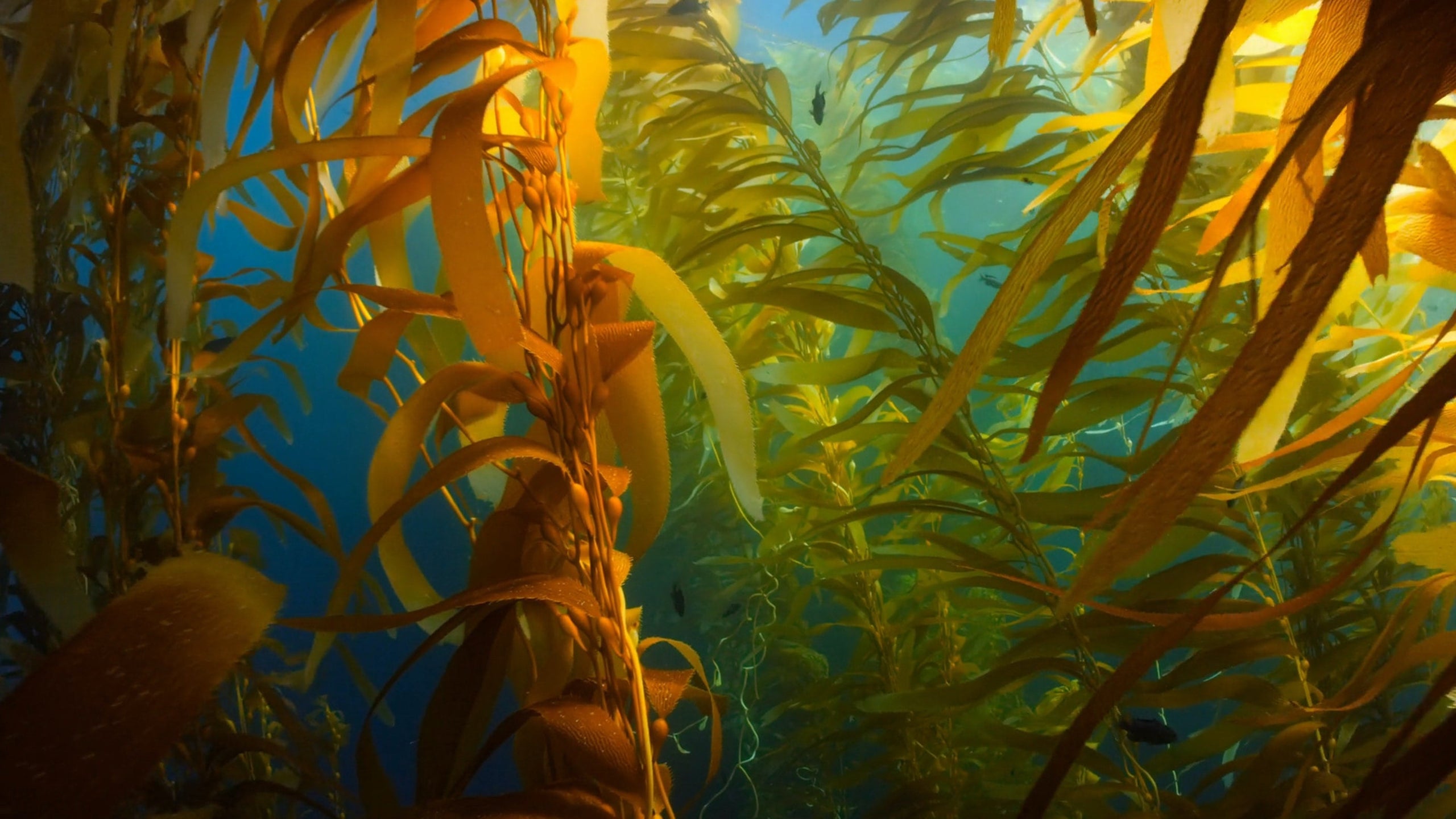
A Beginners Guide to Seaweed Foraging
4 Min read
In this blog you can learn what seaweed is, where to find it, when and how to forage for it and how to use it, as well as two of my favourite edible seaweeds.
What is seaweed?
If you go down to the sea today, you’ll probably see some seaweed; colourful weeds that live, thrive and grow in salty water and are differing lengths, shapes, sizes and textures.
Across the world there are thousands of species of seaweed, also known as marine algae, while the edible ones are sometimes called sea vegetables.
Here in the UK we have over 600 different species of red, green or brown seaweeds. The red and green ones are actually classified as plants, while brown seaweeds evolved separately and relatively recently. Seaweeds are millions of years old, the most ancient varieties being the reds, with fossils showing they could be up to 1.2 billion years old. That blows my mind!

Where does it grow?
Many scientists believe that all life began in the ocean; a rich, fluid concoction of nutrients, organic materials, chemicals and dissolved salts. Whether or not this is true, we do know that seaweeds were born and continue to be born in this fertile, watery environment.
Seaweeds can grow on rocky shorelines, on shingle, rock or sediment, in shallow seas and estuaries; attaching itself to rocks, man-made materials or each other. Each type of seaweed has a preference for specific locations. Some can tolerate differing saline levels, enabling them to live in estuaries where fresh water and sea water meet.
Down on the shoreline, seaweeds may grow on the upper shore, middle shore, lower shore or in subtidal areas where it is submerged under the sea and rarely exposed. Each species of seaweed thrives in particular growing environments, including exposed or sheltered shores.
For example, dulse seaweed (Palmaria palmata) tends to live on middle to lower shorelines and subtidal areas up to 20 metres deep where it is kept cooler and exposed for shorter lengths of time during low tides. It tends to grow in sheltered or moderately exposed areas on rock or growing off forest kelp stems (Laminaria hyperborea) in deeper waters.
When to forage seaweed
Seaweed produces oxygen, sinks CO2, helps protect coastlines and provides feeding and living environments for multiple sea-dwelling creatures and organisms. It’s therefore essential that seaweed is allowed to grow and flourish and is only foraged by hand and in small amounts.
For thousands of years seaweed has been used as a nutritious superfood for humans, boasting over 40 vitamins, minerals and trace elements that are essential for the human body. It has also been used in cosmetics, packaging and supplements.
Each seaweed has a growing season; when it is best to forage, and a reproductive season when it is best to leave it alone so the weed can spawn and reproduce, helping continue the life of seaweeds. For example, dulse seaweed grows from late spring to autumn and is reproducing when cloud-like patches form over the weed. Getting to know these growth cycles of seaweed helps ensure foraging them can be done sustainably.
Like fish and shellfish, seaweeds are susceptible to absorbing toxins and heavy metals, so foraging in clean, pollution-free waters is essential.

How can you forage seaweed sustainably?
To forage seaweed, always check the tides and for safety reasons only forage as the tide goes out. The lower the tide, the larger the area you have to forage seaweeds.
Check the weather forecast, as the coastal climates can change quickly. Wear suitable footwear for potentially slippery and wet surfaces, never go alone and make sure somebody knows where you are.
A pair of scissors can be really helpful for foraging seaweeds sustainably, as you only want to cut part of (up to one-third) of each weed, leaving the rest intact and growing.
For example, when harvesting oarweed, aka tangle (Laminaria digitata) seaweed, a type of kelp, cut one or two fronds (large leaf or blade of seaweed) leaving 3 inches/6 cm at the base of the frond. This ensures the fronds of seaweed can grow back.
How to use seaweed
Seaweeds are broad in their colour, flavour and versatility. One simple way to use seaweeds is to dry and grind them to flakes or powder to sprinkle on salads, into stews, soups or smoothies.
Two of my most favourite seaweeds and ones that I use a lot are;
Dulse seaweed
Dulse (Palmaria palmata) has a wonderful umami and salty flavour and traditionally is used in potato dishes, I also love it with eggs and added to homemade bread.
Recipe suggestion: Add a tablespoon of dried dulse flakes to 500g/1lb bread flour when making bread, or a teaspoon to scrambled eggs, or a light sprinkling over salad, it goes particularly well with tomatoes.
Kelp seaweed
Oarweed (Laminaria digitata) is more subtle in its flavour, it can add depth to soup and stews and is the basis, along with shitake mushrooms, of dashi stock which is used in Japanese miso soup.
Recipe suggestion: Add a 10cm/5inch length of dried kelp into a soup or stew and simmer for 30-60 minutes. You can then take the kelp out and discard it (the goodness will be in the water), or slice it into noodles lengths, add it back into the pan and serve.

About the author
Rachel Lambert has been leading seaweed foraging courses since 2007. Her book: Seaweed Foraging in Cornwall and the Isles of Scilly won a Gourmand World Cookbook award (2017) in the fish category! She lives by the coast in Cornwall and never tires of all its changing moods, colours and the nutritious food it provides. www.wildwalks-southwest.co.uk
